We first caught sight of Sigiriya Lion Rock during our descent from the Dambulla Cave temple, some 20 km away. The rock is striking – rectangular with a flat top, it stands apart from the nearby triangular hills. Rising almost 600 feet above the surrounding plains, its peculiar structure naturally sparks curiosity. This curiosity seems to have drawn people to it as far back as 3000 BCE.
Caves and inscriptions dating back to the 3rd century BCE to 1st century CE, discovered around the base of Sigiriya point to its use as a Buddhist monastic complex. Translations of these inscriptions reveal that local rulers and wealthy patrons dedicated the caves to Buddhist monks for meditation and religious practices. However, the summit had limited use during this period. Historians speculate that it may have been used for temporary religious rituals or as a watchpoint.
It would take another 500 years — a troubled yet hugely ambitious king — and thousands of laborers to transform this rock into an architectural marvel.
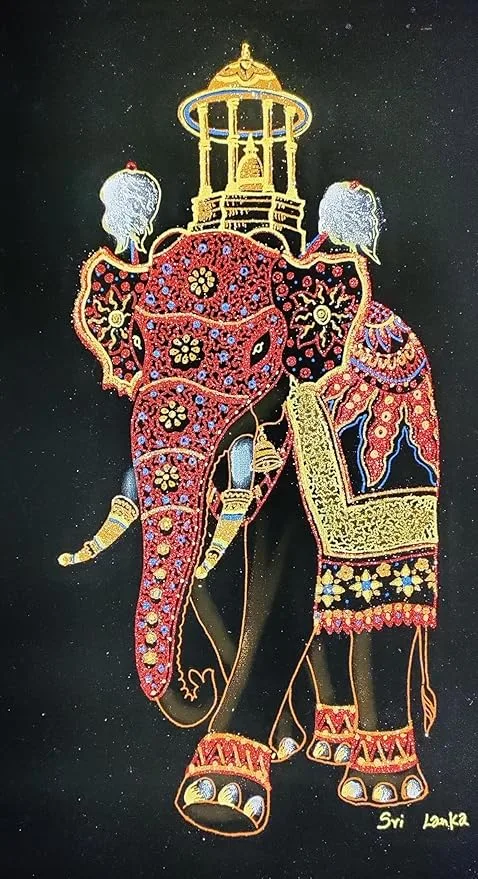
Shop now!
The Fascinating History of Sigiriya
Kashyapa I – The Usurper
King Dhatusena ruled the powerful Anuradhapura Kingdom in 455 CE. He had three children: A son, Moggallāna, and a daughter, Sangha, born to his queen, and Kashyapa, his eldest son from a concubine of lower status.
When the children grew up, Sangha married Migara, Dhatusena’s nephew. Migara was the general of the army and a powerful figure in Anuradhapura.
One day, after an argument with Sangha, an angry Migara burnt Sangha’s ears with hot needles.
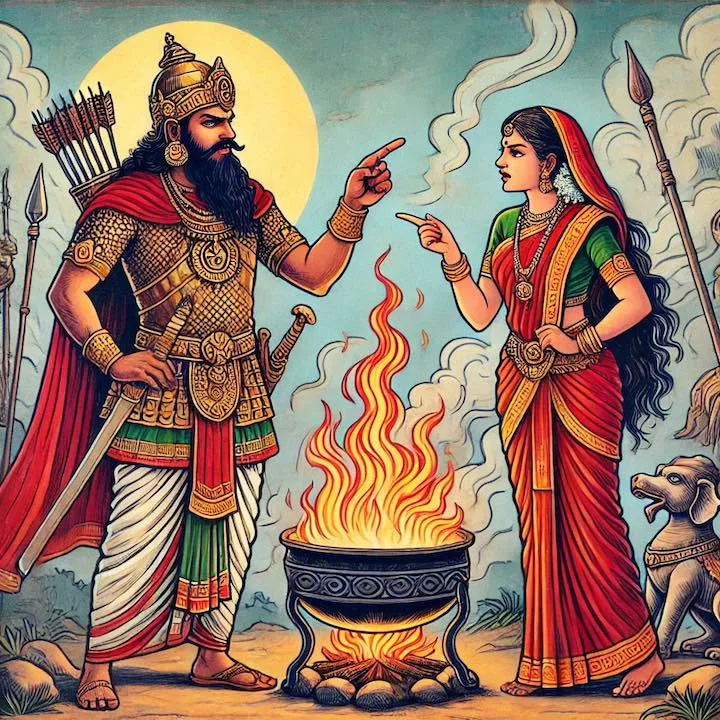
When Dhatusena heard about this, he was enraged. Dhatusena blamed his sister for raising a cruel son. His punishment was brutal—she was burned alive. This horrifying event planted the seeds of revenge in Migara, who quietly began plotting Dhatusena’s downfall.
Kashyapa, meanwhile was also not happy with Dhatusena’s rule. Even though he was Dhatusena’s oldest son, he was not next in line for the throne because his mother wasn’t of royal blood.
Frustrated with his uncertain future, Kashyapa decided to take matters into his own hands. With Migara’s support and military backing, he pulled off a palace coup, overthrew Dhatusena, and became king in 477 CE. Moggallana, fearing for his life, fled to South India.
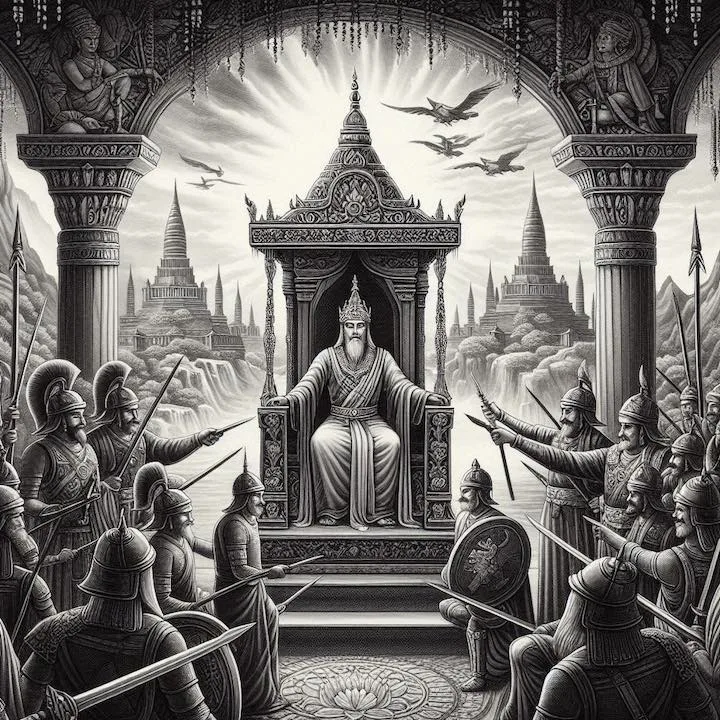
Migara then convinced Kashyapa that Dhatusena had hidden great treasures. When Kashyapa demanded these from the imprisoned king, Dhatusena took his captors to the Kala Wewa, a large irrigation tank he had built, and declared it his only treasure. Furious at being deceived, Kashyapa had his father killed by sealing him alive inside a wall.
And so, Dhatusena’s brutal punishment of his sister set off a chain of events that led to his tragic downfall and Kashyapa’s rise to power.
Construction of the Sigiriya City and Palace
After the coup, Kashyapa was disgraced among the public and received the name, Pithru Ghathaka Kashyapa meaning, father killer Kashyapa. Because of this, and fearing an attack from Moggallana, Kashyapa moved his capital from the traditional capital of Anuradhapura to the more secure location of Sigiriya Rock.
At Sigiriya, Kashyapa launched one of the greatest engineering projects of his time. Around 477 CE, construction began, and it’s believed that thousands of artisans, engineers, and laborers worked tirelessly for 7 to 8 years to turn the rock into a magnificent fortress-palace with advanced hydraulic systems, palaces, gardens, frescoes, and the Mirror Wall.
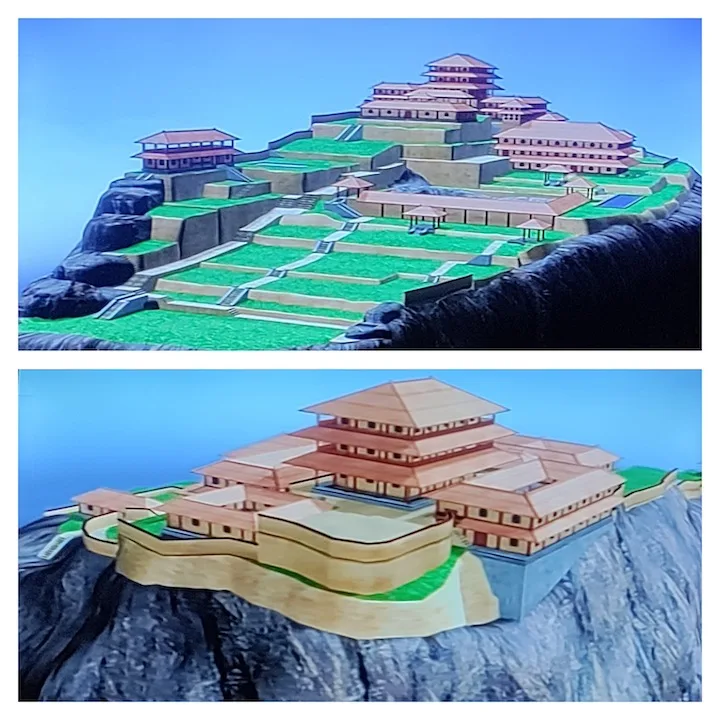
The Return of the King and the Decline of Sigiriya
Kashyapa’s reign came to a dramatic end in 495 CE, about 10 years after Sigiriya was completed. Moggallana returned from South India with an army, determined to reclaim his rightful place as king.
Kashyapa positioned his forces near Sigiriya, ready to defend against Moggallana’s advance.
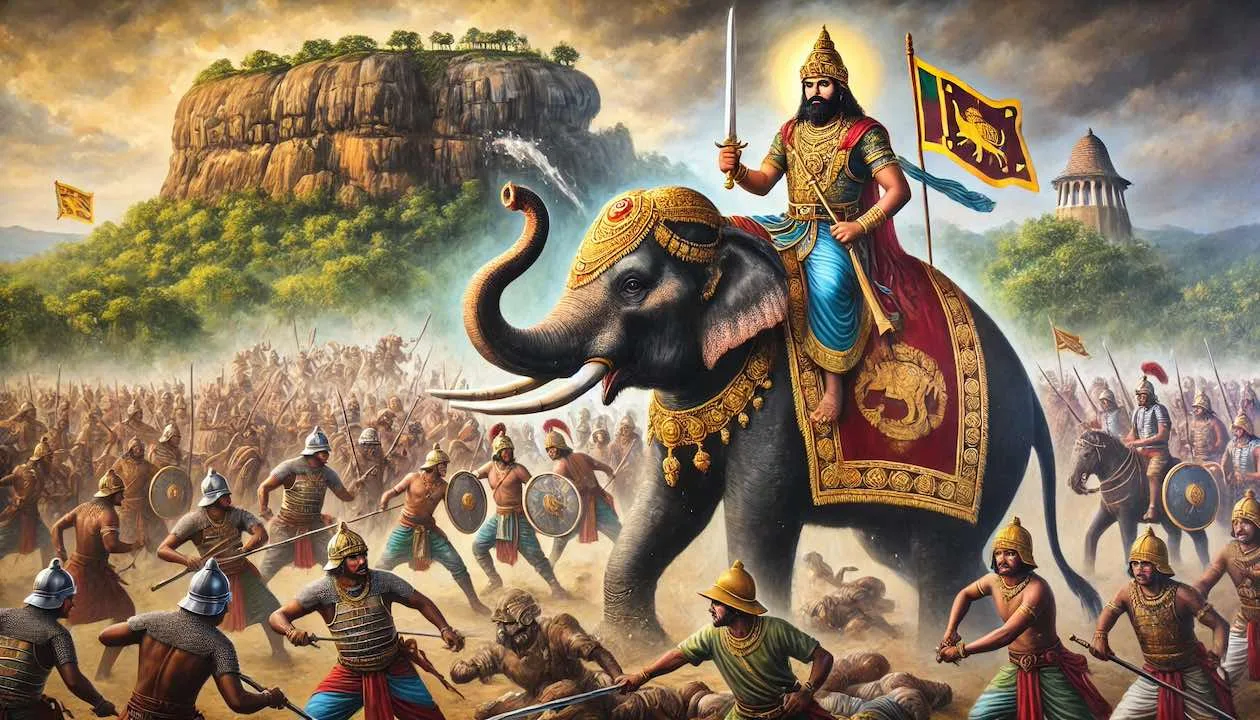
During the battle, while leading his troops on a war elephant, Kashyapa encountered difficult terrain—possibly a swamp or marshland. To avoid getting stuck, he made a maneuver to bypass the obstacle. Unfortunately, his soldiers misread the move as a retreat. Believing their king was fleeing, they panicked and scattered. Moggallana’s army seized the moment, launched a decisive attack, and overpowered them
Realizing that defeat was imminent and unwilling to be captured, Kashyapa took his own life by falling on his sword, thus ending his reign and the brief era of Sigiriya as a royal capital.
After Kashyapa’s death, Moggallana moved the kingdom’s administrative center to Anuradhapura and repurposed Sigiriya as a Buddhist monastic complex. Monks continued to inhabit and maintain the site for several centuries, leaving behind inscriptions on the Mirror Wall and in nearby caves.
By the 13th century, Sigiriya began to decline in importance, and it was eventually abandoned. Over time, it was reclaimed by the surrounding jungle and forgotten, becoming the stuff of legend until its rediscovery by British explorers in the 19th century.
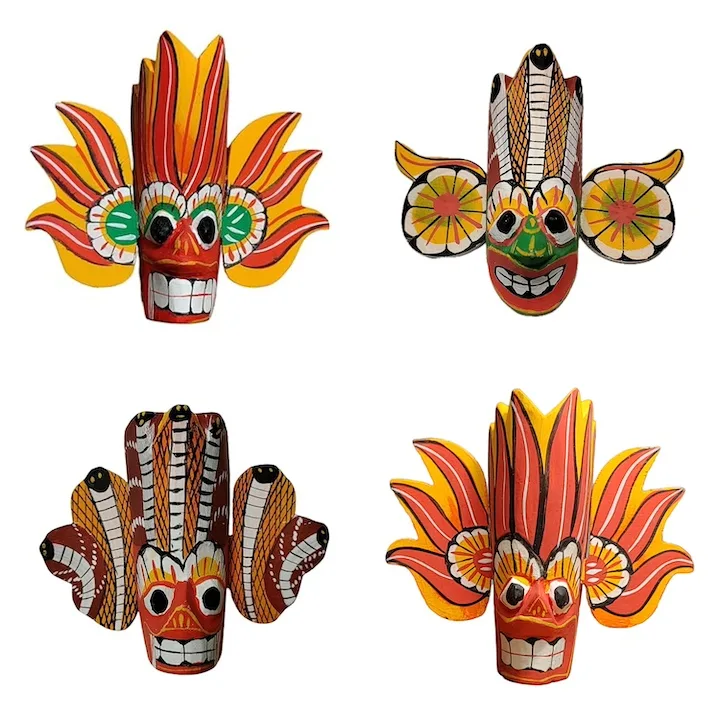
Key Attractions of Sigiriya
The Lion Staircase
An iconic feature of Sigiriya is the grand Lion Staircase, which serves as the main entrance to the palace complex at the summit. This entrance gave Sigiriya its name, meaning “Lion Rock” in Sinhala.
The staircase is flanked by lion paws, carved in intricate detail. Above the paws, a massive lion’s head and shoulders were constructed, with an open mouth that formed the entrance. Visitors would have climbed through the mouth and ascended the stairs to reach the top, symbolically entering the king’s domain through the lion—an emblem of strength and authority.
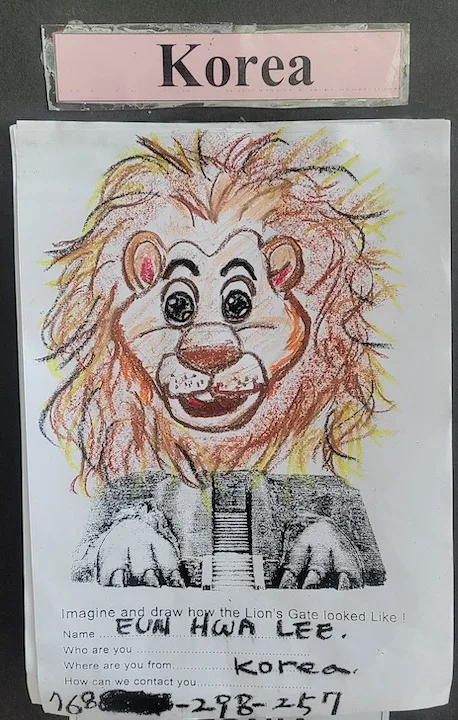
Today, only the lion’s paws remain intact. The upper sections, including the head, have been lost to time and erosion.
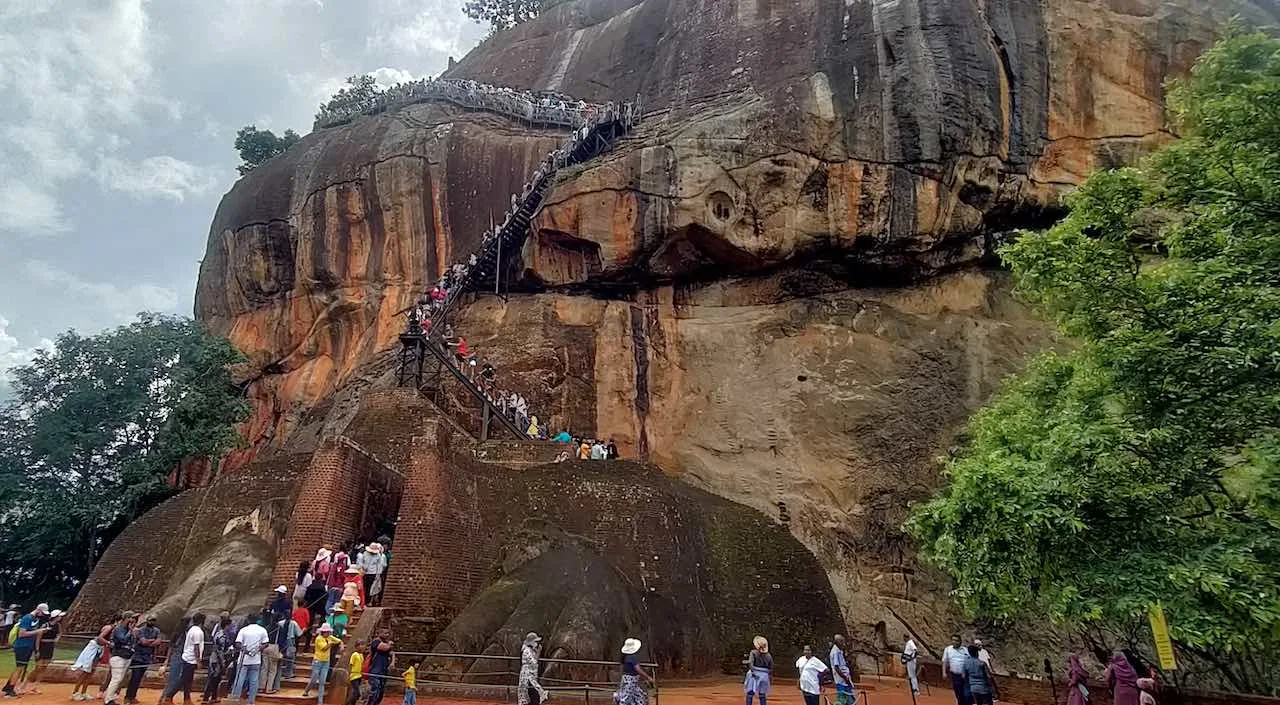
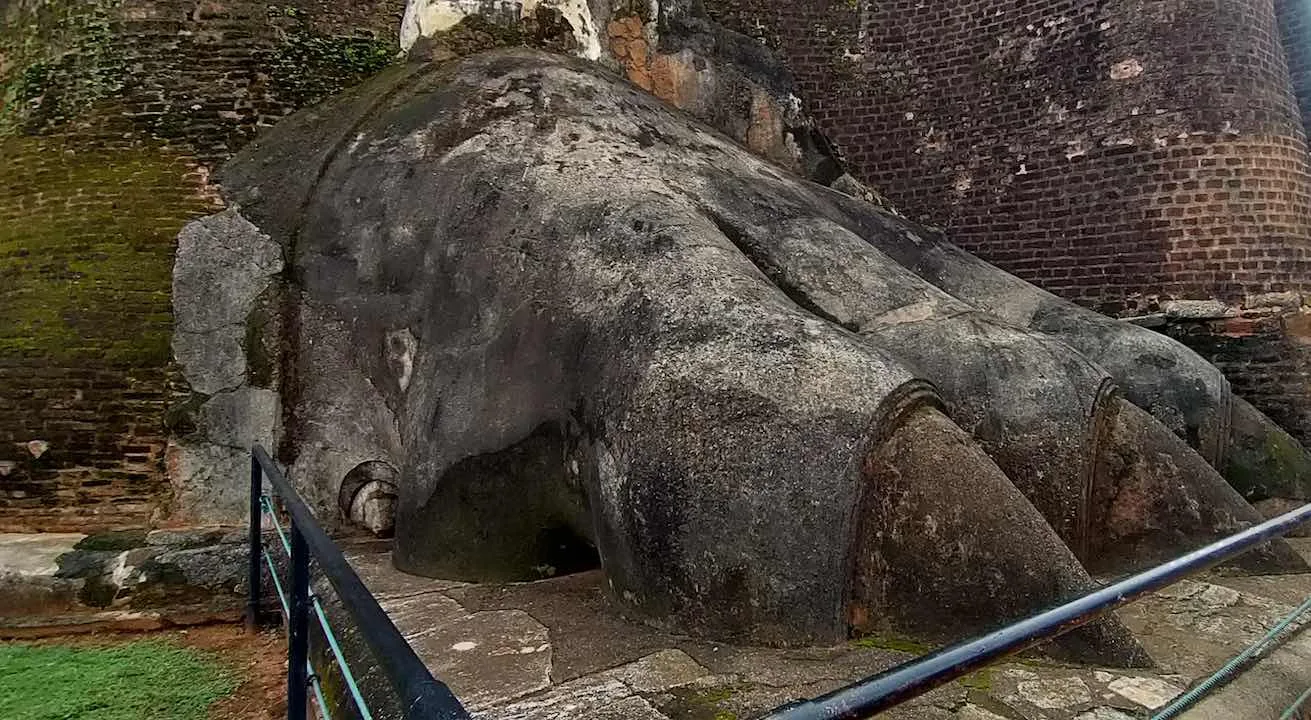
Frescoes of Sigiriya
One of the most striking features of Sigiriya is the frescoes painted on the western face of the rock. Frescos are a type of mural painting technique where pigments are applied to freshly laid, wet plaster on a wall or ceiling. The term “fresco” comes from the Italian word “affresco,” meaning “fresh.”
Frescoes of Sigiriya are believed to depict celestial nymphs or royal courtesans and are painted using natural pigments derived from local minerals. The artists used a unique technique, applying the paint on wet plaster to ensure the images bonded permanently to the rock surface. The vibrant hues of red, yellow, and green give life to the ethereal figures, making them appear as if floating among the clouds. The Sigiriya rock is believed to have once featured a large number of these paintings arranged in a row, wrapping around the rock to form a stunning picture gallery.
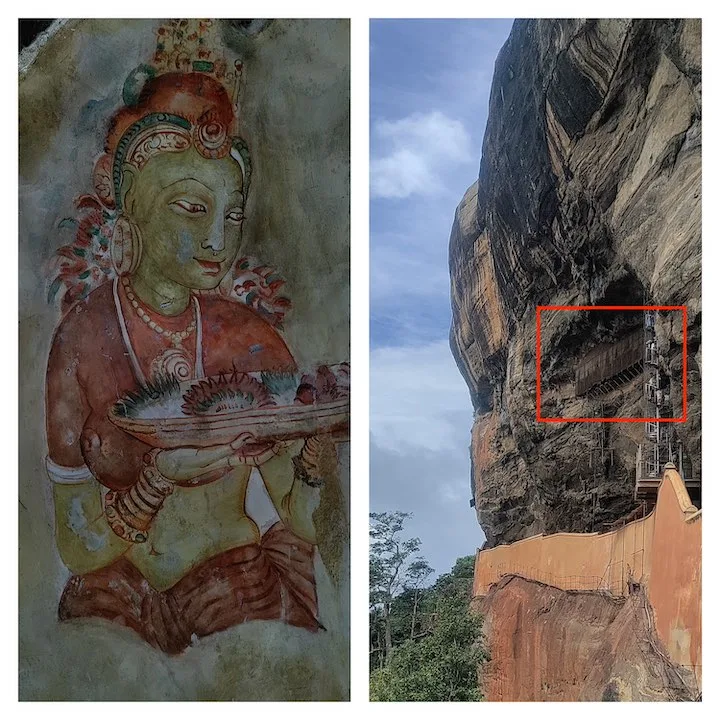
The red box shows its location.
The precarious location of these fresco paintings makes them more impressive. Painting on the side of a rock would have been an incredibly challenging task, requiring skilled artists, careful planning, and considerable ingenuity in terms of tools and scaffolding.
The Mirror Wall
One of the most intriguing features of Sigiriya is the Mirror Wall, located along the pathway leading up to the summit. Originally, this wall was constructed to protect visitors from falling off the narrow path and was later polished so thoroughly that it reflected images like a mirror—hence its name.
Over time, the Mirror Wall became more than just a polished surface—it turned into a canvas for ancient visitors. Between the 7th and 13th centuries, travelers and pilgrims inscribed hundreds of verses, poems, and notes on the wall, many of which have been preserved. These inscriptions, often written in Sinhala, Sanskrit, and Tamil, provide a fascinating glimpse into the lives and thoughts of those who visited Sigiriya long after Kashyapa’s reign.
Some inscriptions are humorous, while others are poetic and philosophical. One famous verse reads: “I am Budal, came with hundreds of people to see Sigiriya. Since all others wrote poems, I did not!”
Today, visitors are no longer allowed to write on the wall, but we can still admire its historical significance and the ancient graffiti that survives.
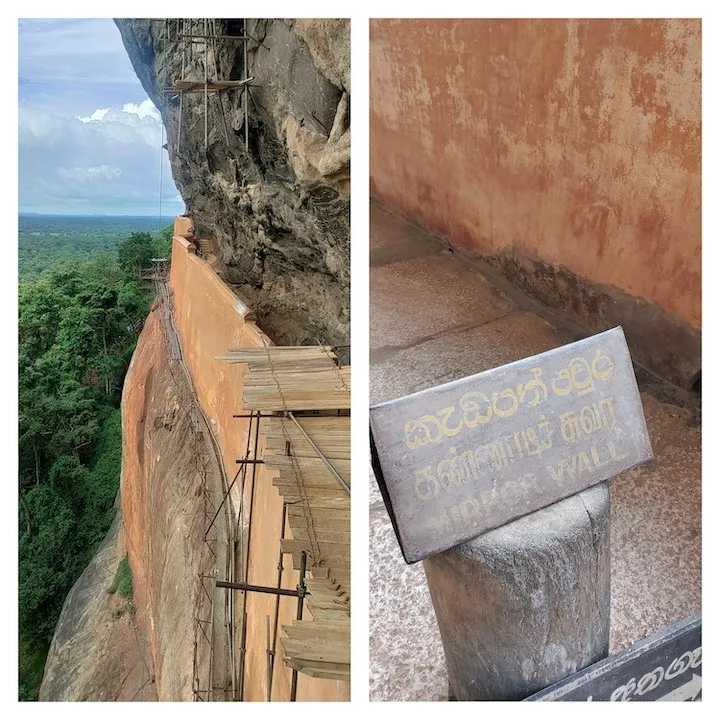
Palaces of Sigiriya
The summit of Sigiriya was dominated by the royal palace, built on a flat platform at the top of the rock. The palace was designed to blend seamlessly with the natural landscape while offering breathtaking views of the surrounding plains.
The palaces were divided into two sections, the upper palace, located at the very top, was constructed using brick and wood, with foundations cut into the rock. It likely served as the king’s main residence and included a throne room, living quarters, and possibly a royal audience hall.
The lower palace situated at the base of the rock was surrounded by gardens and acted as an entry point to the complex. It was likely used for administrative purposes and by royal attendants.
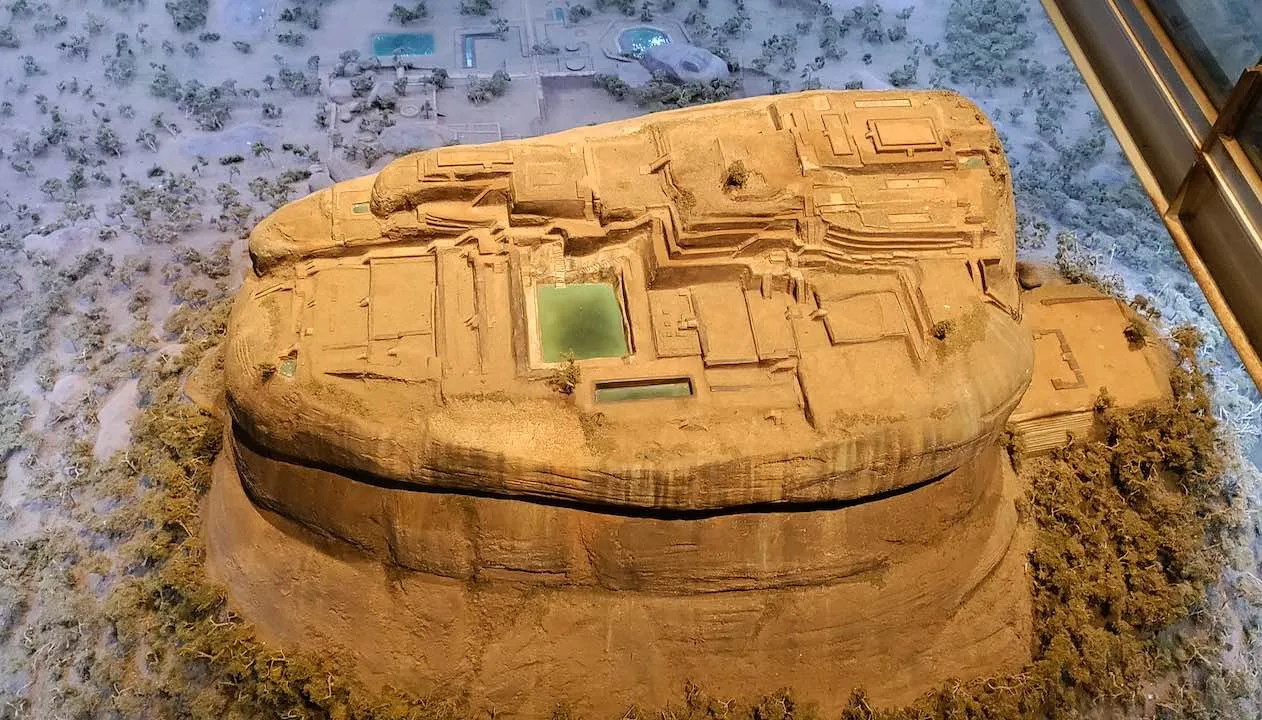
and the entrance on the right
Gardens and Hydraulic System
The gardens of Sigiriya are among the oldest landscaped gardens in the world, showcasing a remarkable blend of aesthetic design and engineering innovation. They are divided into three types: water gardens, with pools, fountains, and channels; boulder gardens, incorporating natural rock formations into pathways and terraces; and terraced gardens, which ascend the slopes of the rock.
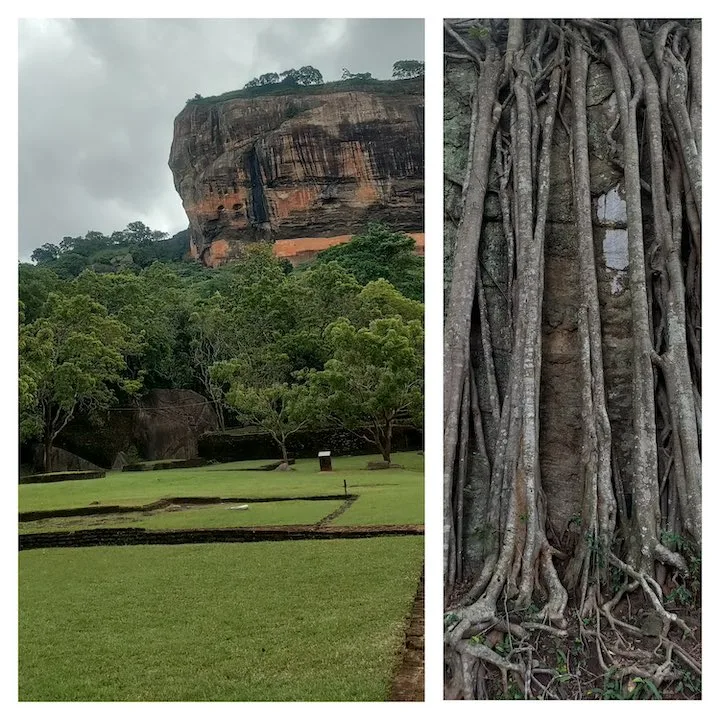
The beauty of these gardens was sustained by an advanced hydraulic system that included underground channels, cisterns, and reservoirs to manage water flow. Ingeniously designed fountains, powered by natural pressure, still function during the rainy season, highlighting the sophisticated engineering techniques of the time.
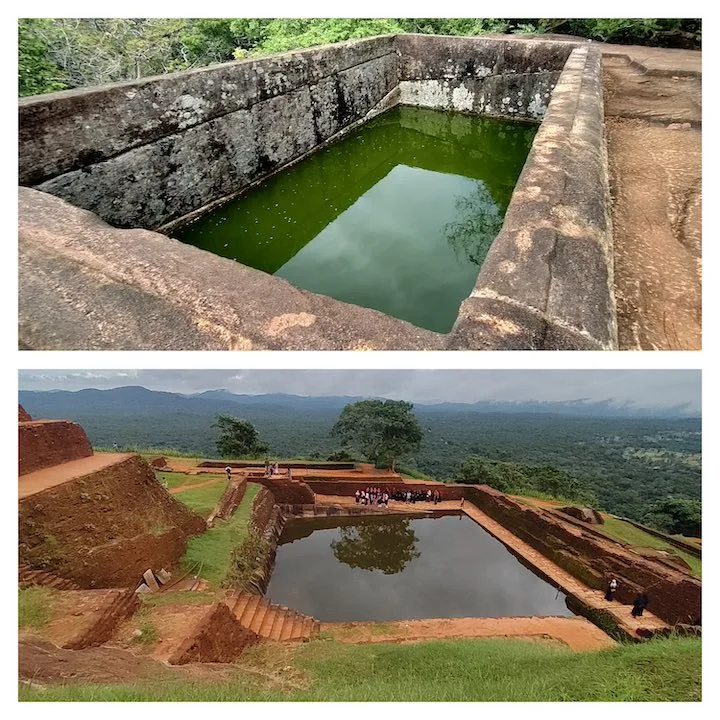
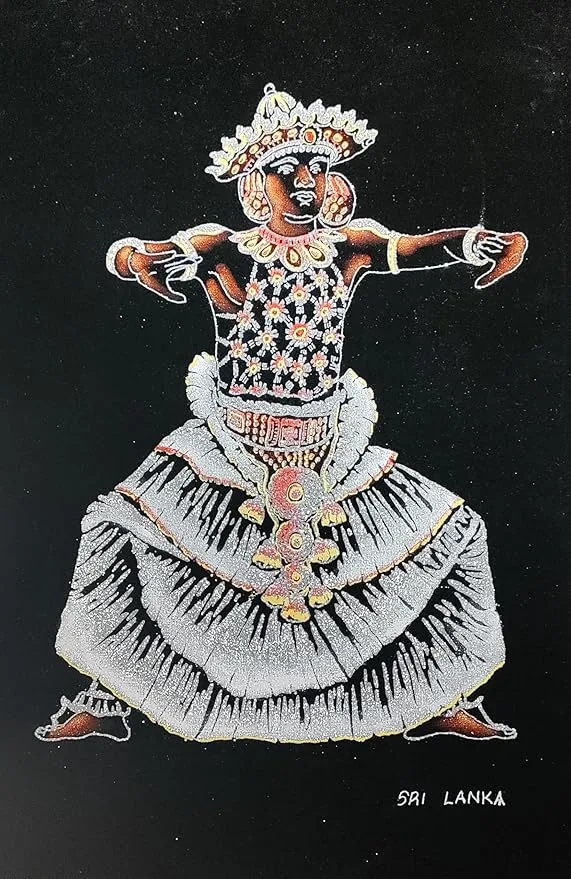
Shop now!
Pidurangala Rock
Just a few kilometers north of Sigiriya lies the Pirdurangala Rock, which offers a complete, unobstructed view of Sigiriya Rock rising dramatically from the plains.
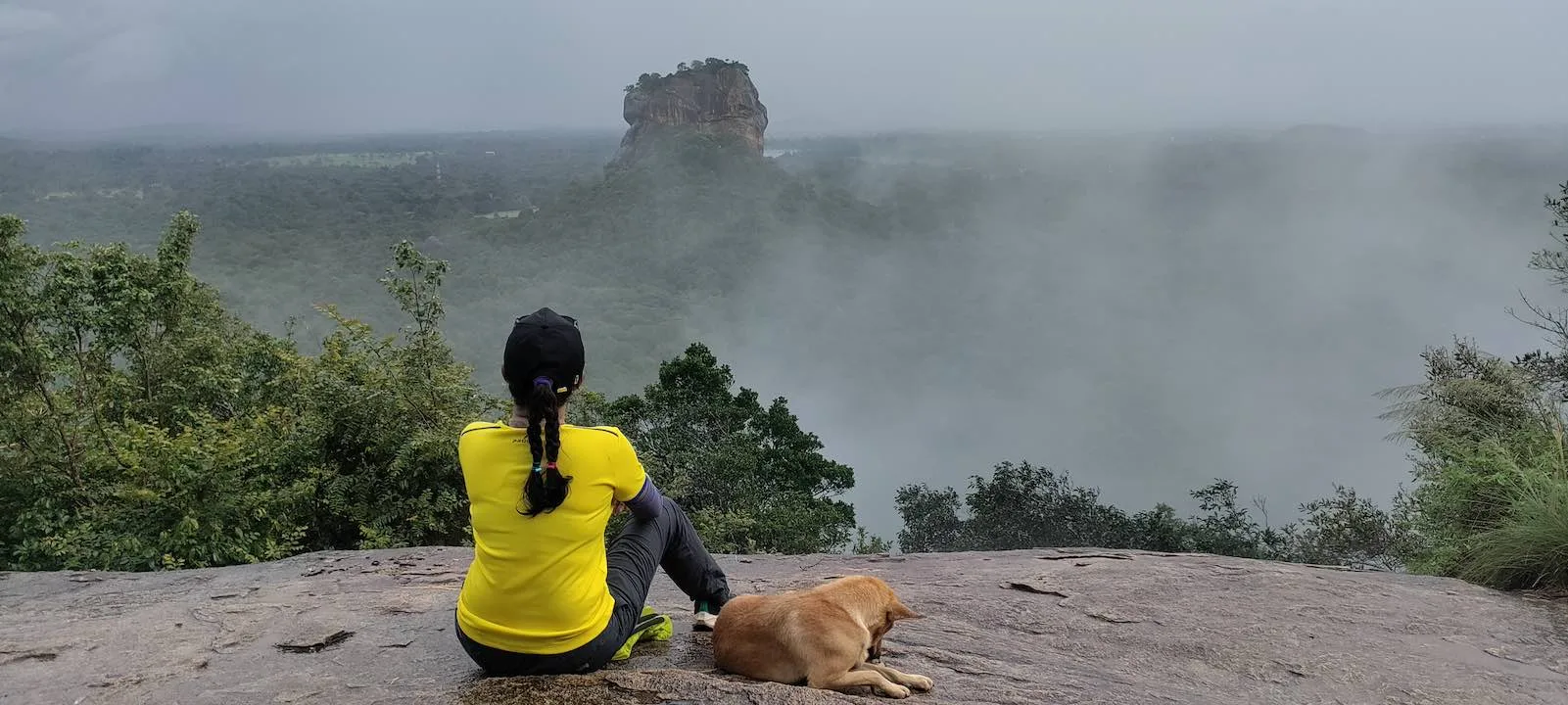
After King Kashyapa fled to Sigiriya following the assassination of his father, King Dhatusena, he requested the monks who were meditating at Sigiriya to relocate to Pidurangala. As compensation, Kashyapa refurbished the temple at Pidurangala, turning it into a significant religious site.
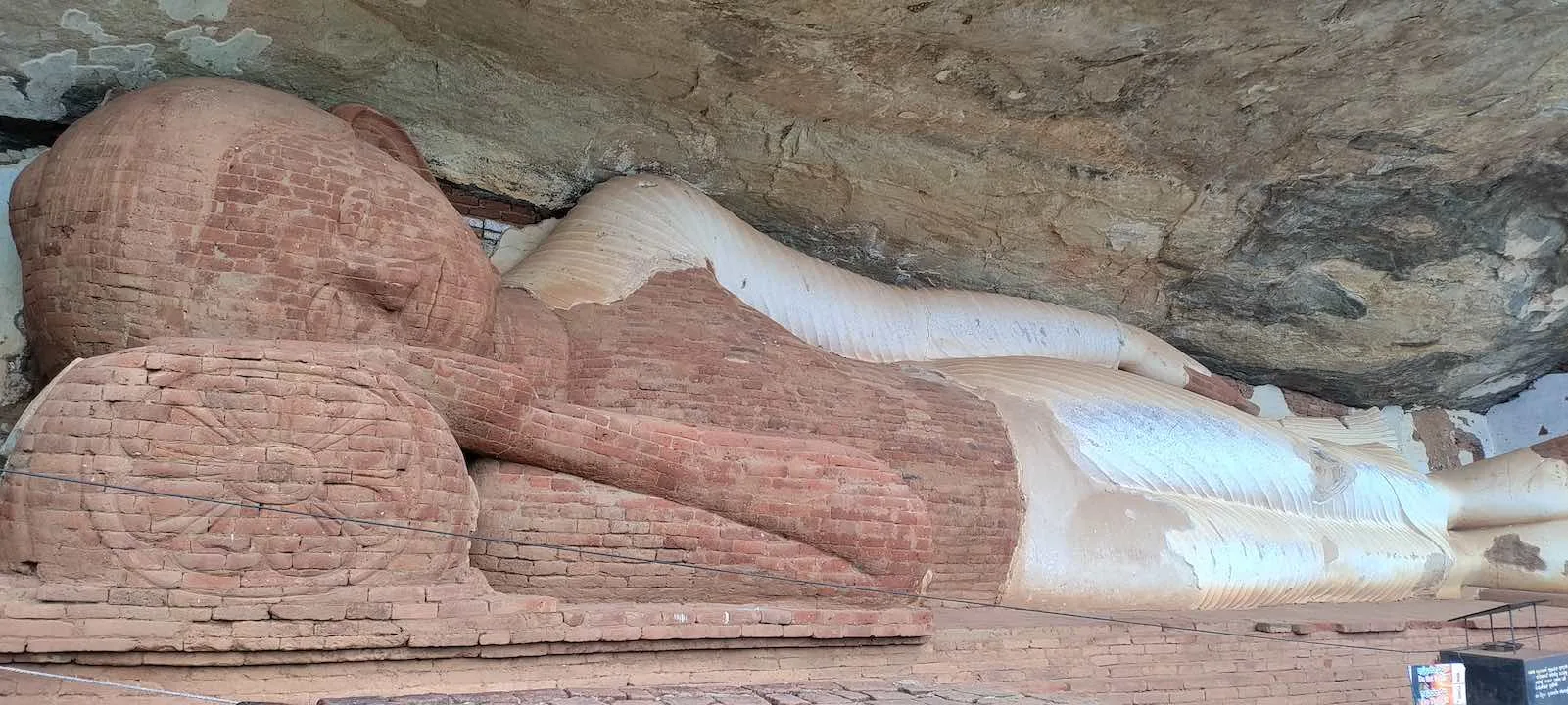
The Pidurangala hike is moderately challenging but well worth the effort, especially at sunrise or sunset when the view becomes even more spectacular. Compared to the crowded ascent at Sigiriya, Pidurangala offers a more serene and natural experience.
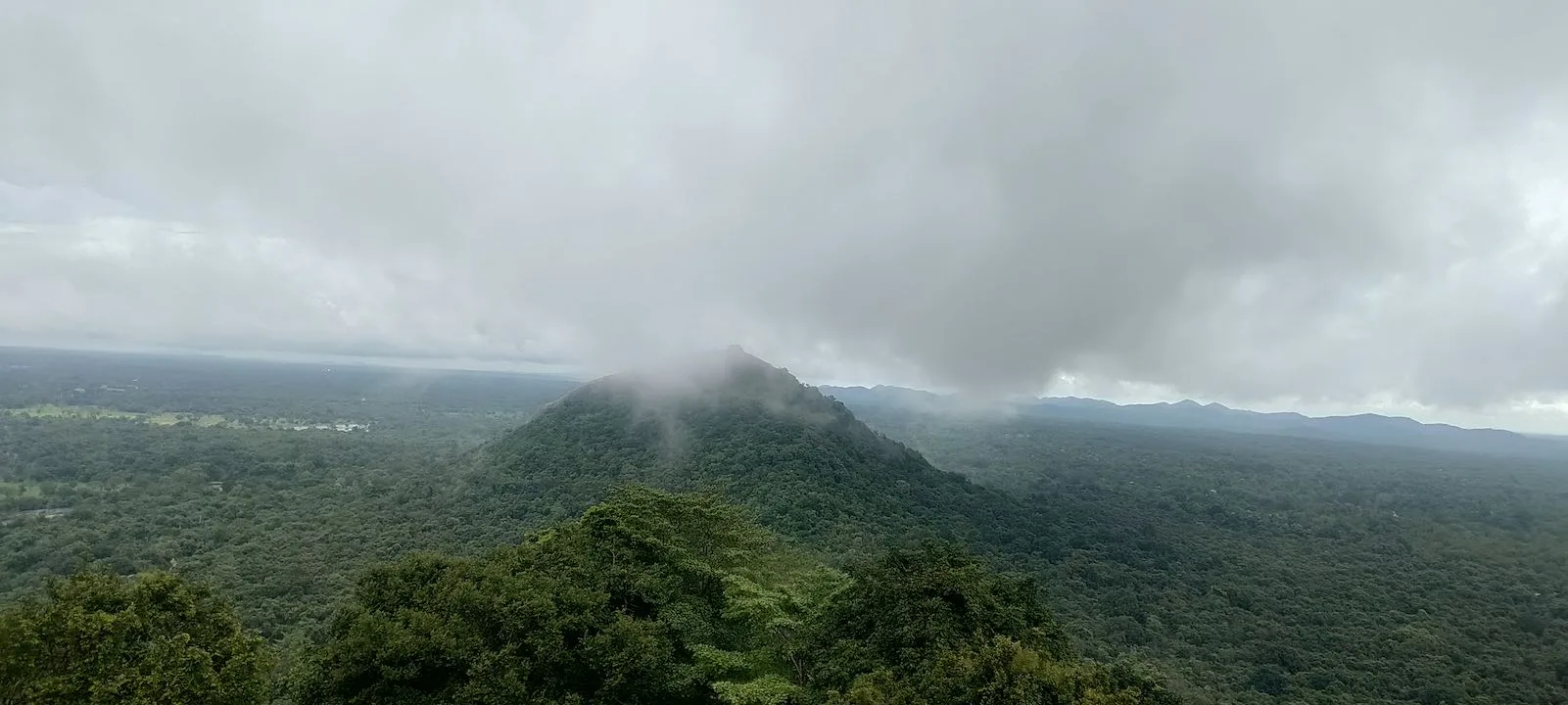
The Museum
The Museum at the base of Sigiriya is worth a visit before starting the hike to the top. Learning the history behind the rock made our visit so much more fascinating—it turned two short hikes into an epic journey through the lives of ancient kings. Although many of the ancient structures have fallen prey to time, knowing the story behind them helped us imagine how they once stood in their full glory.
Thanks for reading! If you have any questions, please don’t hesitate to leave a comment below. We’ll get back to you as soon as possible.
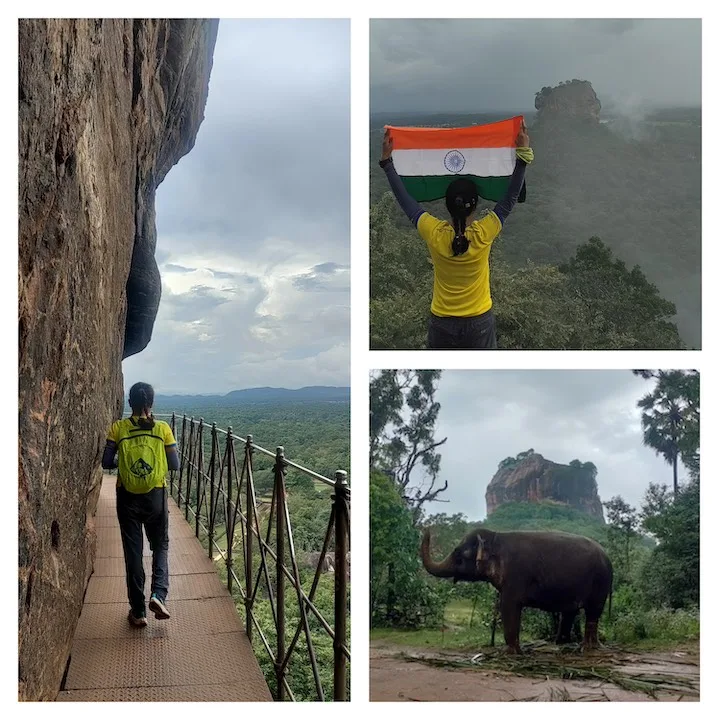
History is a gallery of pictures in which there are few originals and many copies.
Alexis de Tocqueville

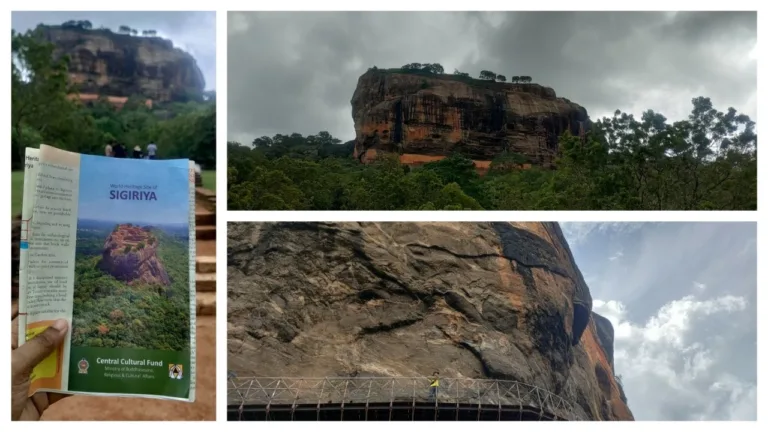

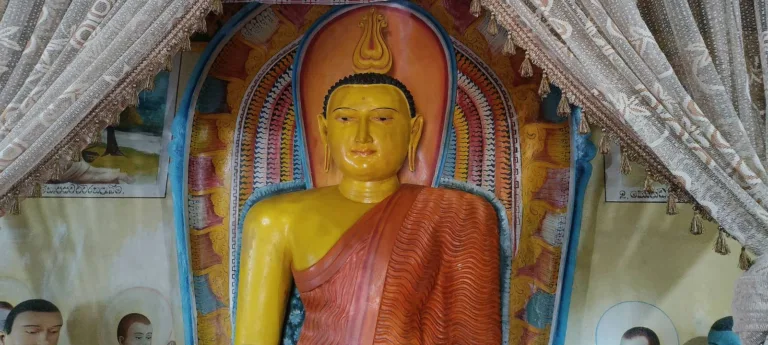
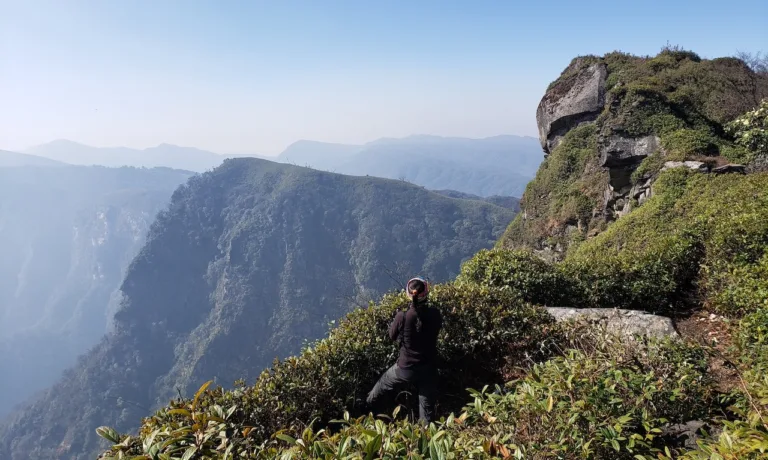
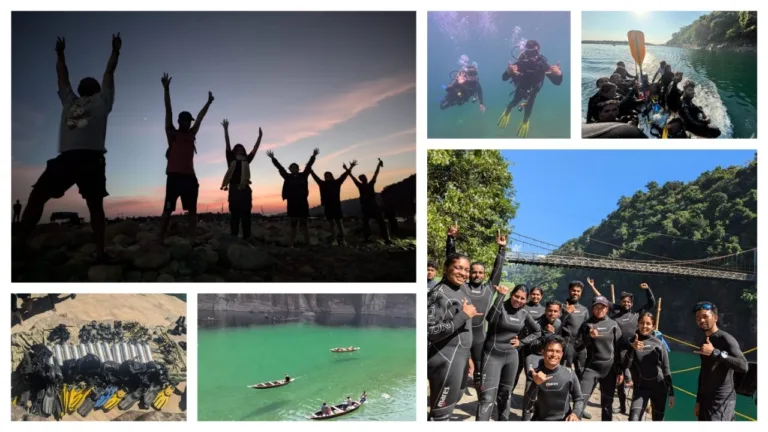
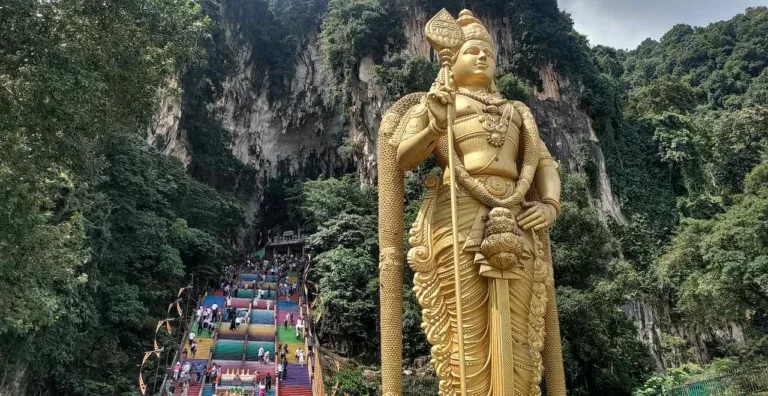

History 🎉
Thanks!
🐼 you are my best friend 🤠
I want to go Srilanka